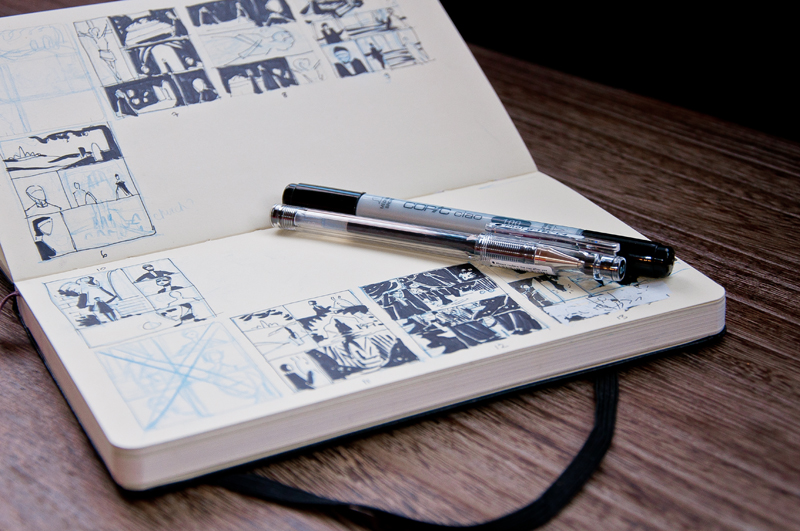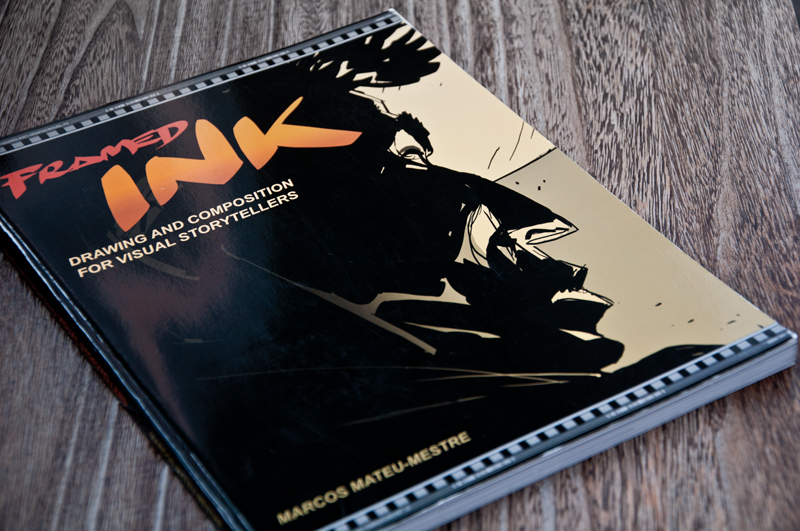This is a follow up for the first article in the “How to make a web comic”-series: Writing Run Freak Run
For me thumbnailing is the most important step in order to deliver consistent storytelling. In addition to delivering high quality art, our end goal is to make sure that each panel has a purpose within the story and moves the reader forward. If we create a comic by only making beautiful, stand alone images, then they will end up stopping the reader and pulling them out of the narration. It would be the equivalent of constantly pausing a movie and watching a single shot. The shot can be beautiful, but you wouldn’t have much of a storytelling experience.
I sit down with the script, break it down to pages and then draw the whole storyline in one go. The small size of the thumbnails helps to concentrate on the big picture and not to get stuck on small details or the quality of the pictures.
It’s always important to remember the composition of the whole page. Strong composition can set the mood of a sequence before you even start reading and guide the reader’s eye through the page. Setting your panels in a certain way and using different sizes and shapes should result in a sense of rhythm to the narration.
A great book that explains composition of visual storytelling is “Framed Ink: Drawing and Composition for Visual Storytellers” by Marcos Mateu-Mestre. It deals with many compositional rules with clear examples that help illustrate the point. I highly recommend reading it :)
Check out the next article in the “How to make a web comic”-series: Drawing Run Freak Run
Toodle-oo!
-Kaija


